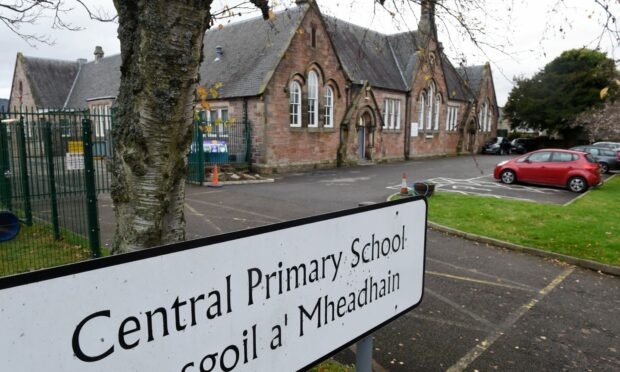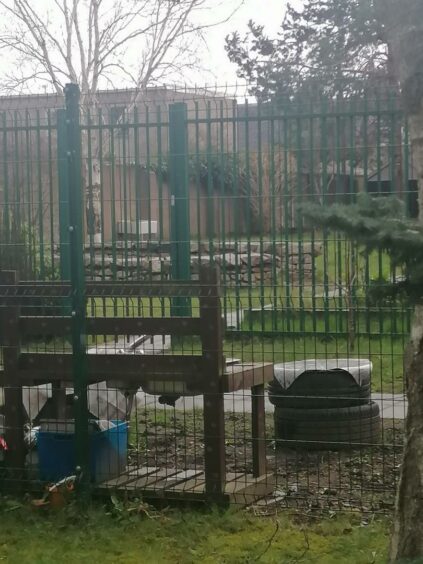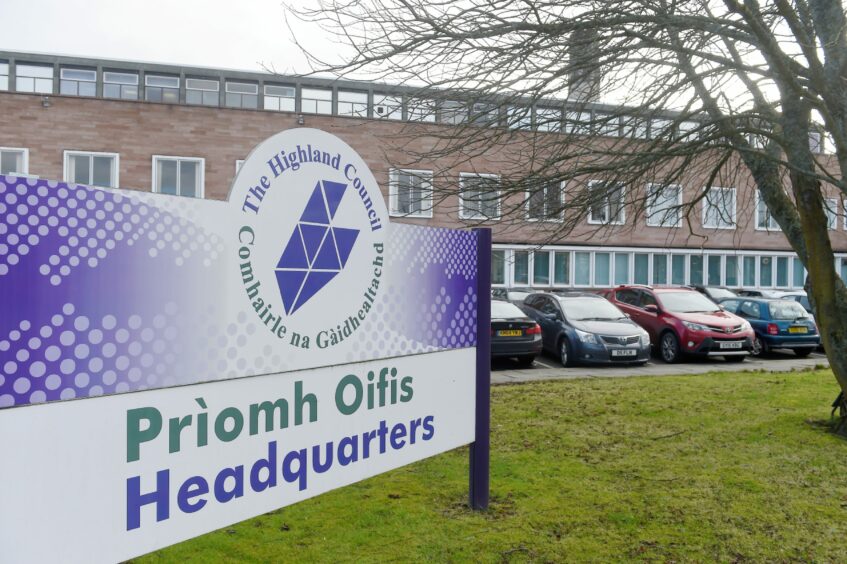An Inverness parent has raised concerns about the safety of 200-year-old Central School after his daughter was twice injured playing in the garden.
The parent, Andrea Miola, also questioned whether schools in Inverness are organised according to a “racial model”. He asked if the council has neglected to update schools with higher concentrations of non-Scottish students, of which he said Central is one.
Mr Miola chose to move his daughter, who is Italian, elsewhere after the injuries.
Highland Council declined to comment on specific pupils. But a spokeswoman said that health and safety inspectors found Central to be in good condition on a recent visit.
In a response to Mr Miola, seen by the P&J, a council officer also explained that school catchment areas are determined geographically and not along any racial lines.
Claims of ‘antiquated’ building and grounds
Central School celebrated its 200th-anniversary last summer.
In his report to the council, Mr Miola described concerns about what he called “antiquated structures not suitable for hosting children”, in particular the outdoor spaces.
He said that his daughter twice suffered deep wounds to her face. Most recently she broke a tooth and had to have it extracted.
Mr Miola said that his daughter was injured playing on slippery asphalt along the sides and rear of the school. He also raised concerns that children were allowed to play in areas with rocks and tyres that he considers dangerous.
A council spokeswoman confirmed that the council received Mr Miola’s report and responded. The council also sent a Health and Safety officer to visit the school following Mr Miola’s complaints in late March.
“The condition and suitability of Central Primary School was recently recorded as satisfactory in the ‘School Estate Statistics for 2021’ report.”
The health and safety team found the school surfaces in good condition. They also said that children are allowed to play in the part of the garden where the injuries happened.
“The area is not a playground but allows children to be introduced to elements which they would find in the natural environment.”
‘School apartheid’ in Inverness?
In his initial letter to the council, Mr Miola described Central as “third-rate” compared to newer city schools.
“In Inverness there are first-rate schools and third-rate schools, as if the children were subdivided into first-rate children and third-rate children. The Central Primary School is a third-rate school and so is evidently left for the use of third-rate children.”
He said there are many Polish, Arab, Eastern European and Italian students at Central. He asked if this contributed to the school’s condition.
“If you live in a nice area, you end up in a nice school. If you live in a more popular area, you are sentenced to a third-rate school. All, of course, certified by the catchment area model, a model that seems to resemble a sort of school apartheid.”
In response to Mr Miola’s letter, a council official explained that school catchment areas are determined geographically. Parents who want to send their children to different schools can submit placing requests to the council.
The council said that they are proud of the school’s long history of serving children in the city centre.
In the Scottish Government’s most recent report on school conditions, Central School was deemed satisfactory. That category is for school buildings that are performing adequately but showing minor deterioration.
School conditions in question across the Highlands
Despite Central School’s satisfactory rating, 39.2% of Highland Council’s 171 primary schools were classed as poor in the government’s report. That’s one of the highest rates in Scotland.
Highland Council recently approved a £60 million school investment plan, which includes money for renovations and new builds in Inverness.
Read more from the Schools & Family team
Masks to be encouraged but not required in schools after Easter holidays


